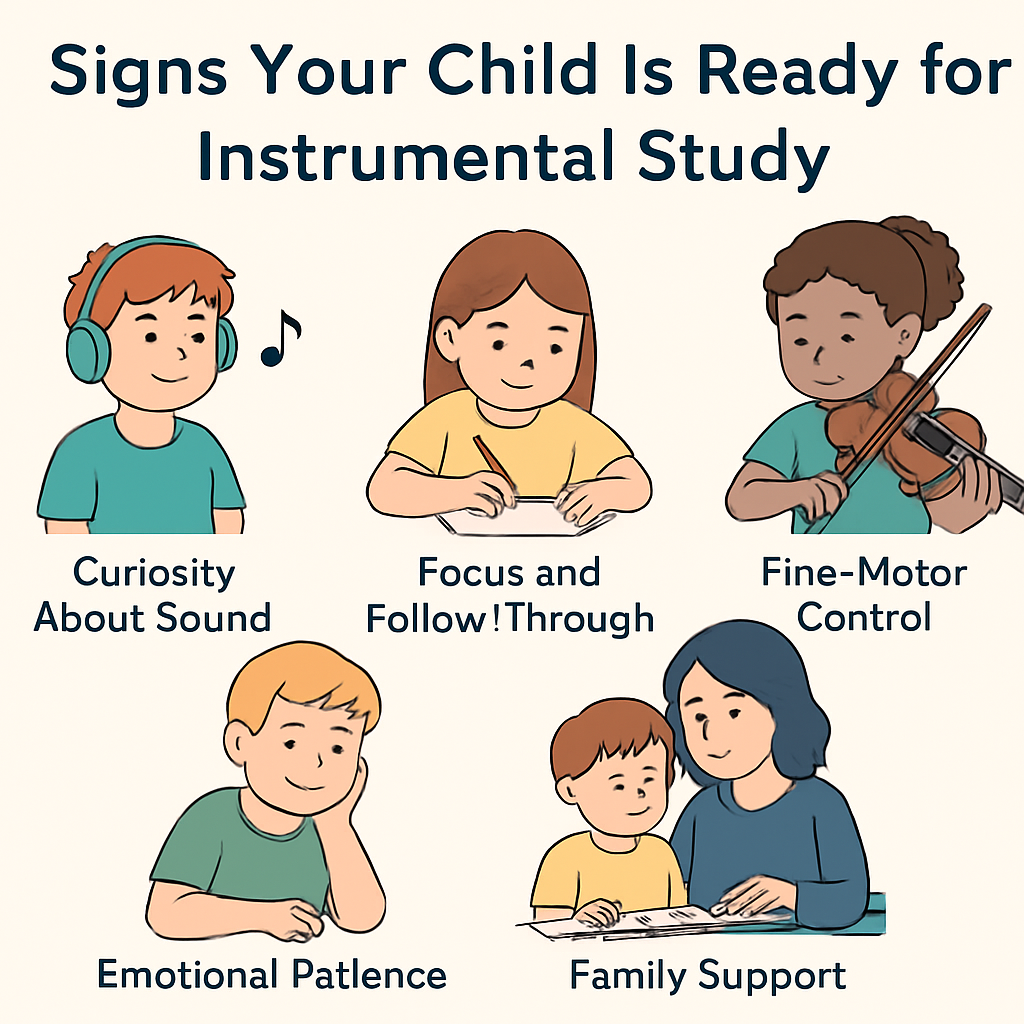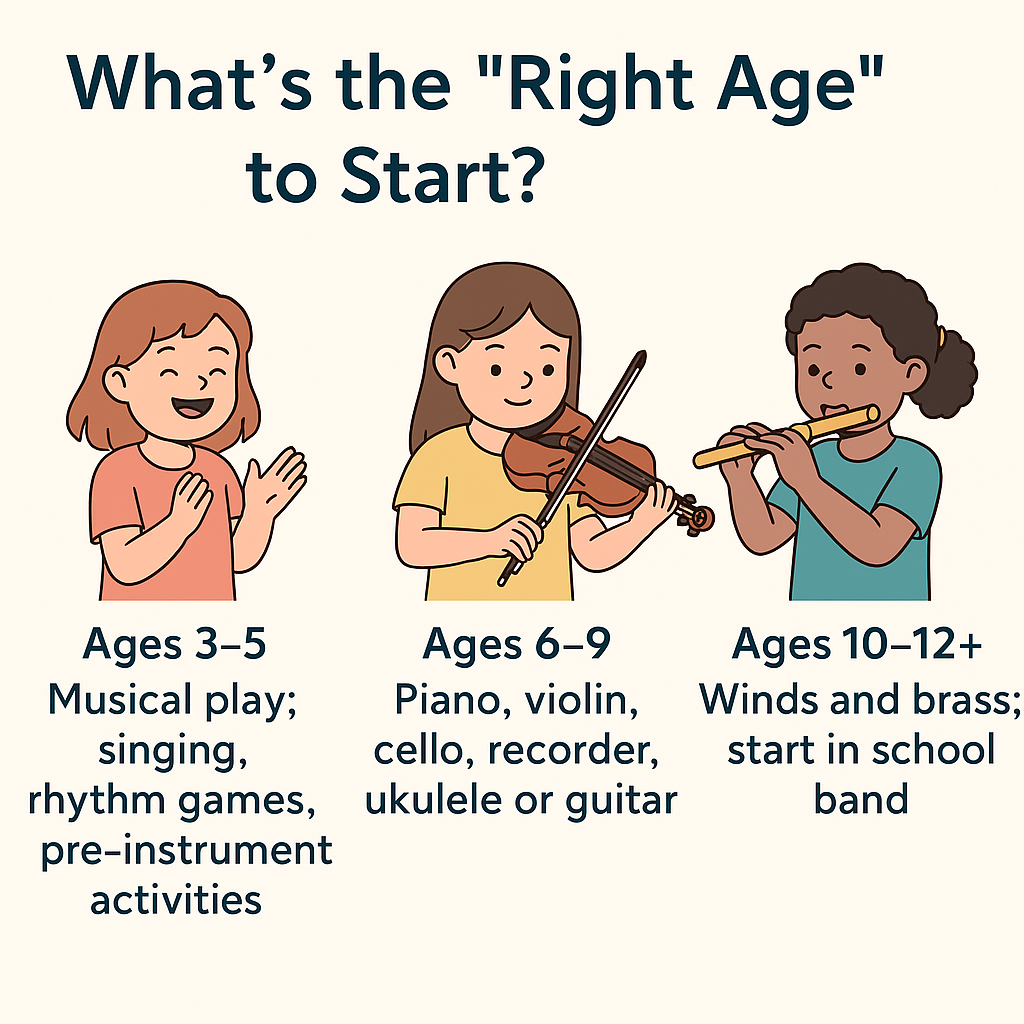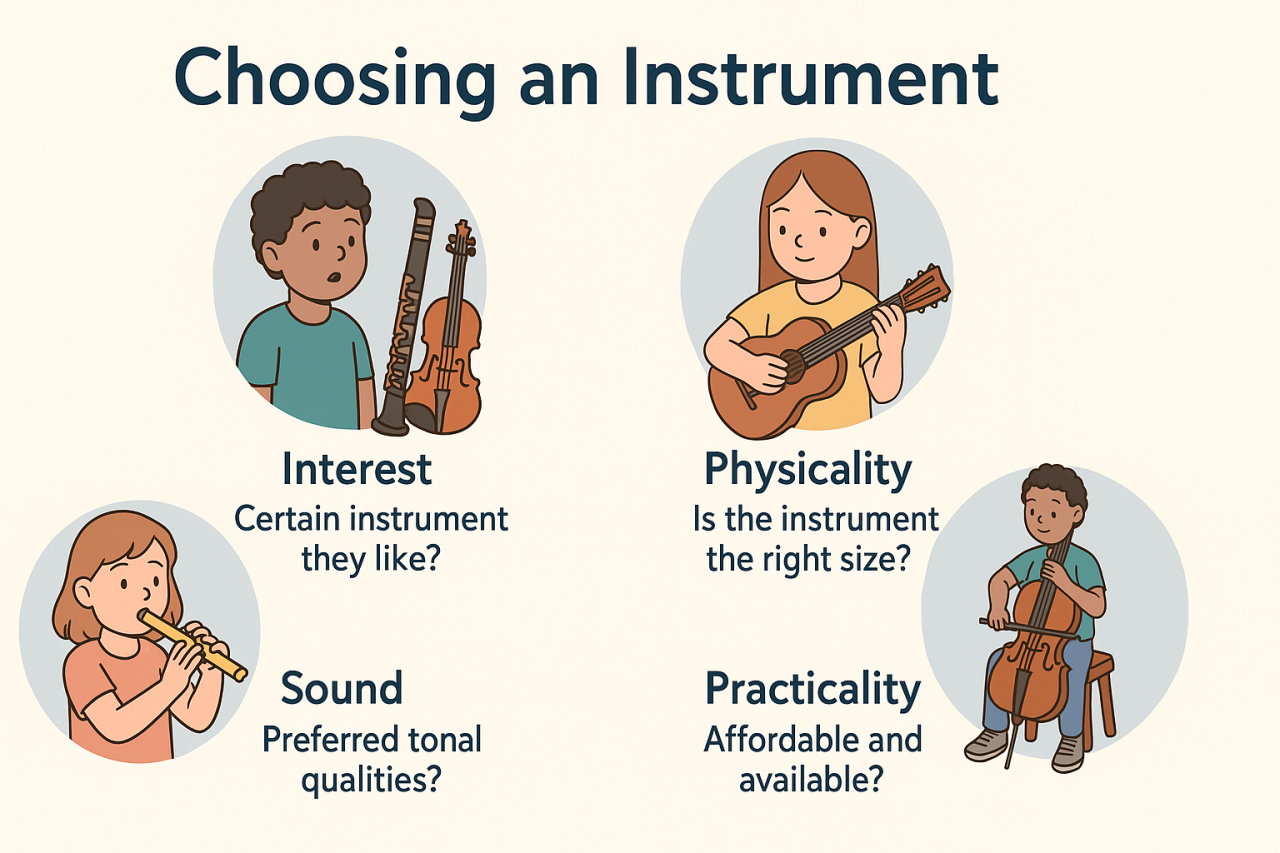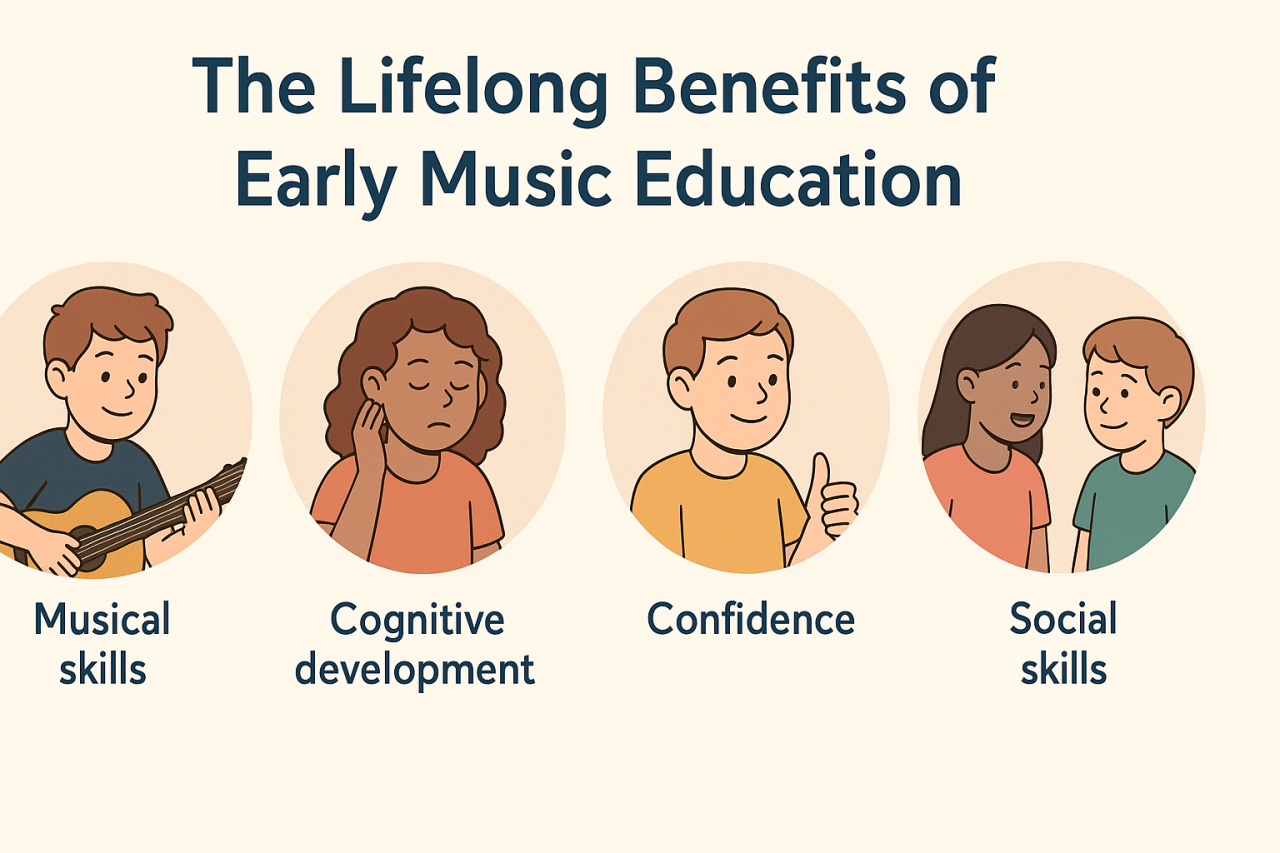🎵 Is My Child Ready for Music Lessons? Choosing the Right Instrument!

In this blog, we’ll explore how to select the best instrument for your child, and how to build positive foundation for lifelong music learning.
Introduction
As a parent, few moments are as exciting as watching your child discover a passion for music. Maybe they’re tapping rhythms on the table, humming constantly, or fascinated by the school band. But how do you know if your child is truly ready for instrumental study? And once you’ve decided, how can you choose the right instrument for them?
In this guide, we’ll explore how to recognize readiness, how to select the best instrument for your child’s age and personality, and how to build a positive foundation for lifelong music learning.

1. Signs Your Child Is Ready for Instrumental Study
Every child develops at a different pace, but there are a few clear indicators that your child may be ready to begin instrumental lessons.
- Curiosity About Sound and Music: A key sign of readiness is genuine curiosity. If your child shows interest in exploring instruments, imitates melodies, or asks questions about how sounds are made, they’re already showing the beginnings of musical awareness.
- Basic Physical Coordination: Learning an instrument requires a certain level of fine motor control — finger strength, coordination, and dexterity. By ages 5–7, many children have developed enough coordination for basic piano, violin, or recorder study.
- Ability to Focus and Follow Instructions: A child who can listen to short instructions and follow through for 10–15 minutes is usually ready for beginner lessons. The early stages of music learning rely more on focus and patience than on natural talent.
- Emotional Readiness and Patience: Music lessons introduce delayed gratification — it takes practice to see progress. A child who can handle mild frustration and stick with challenges is more likely to thrive.
- Parent and Family Support: Parental involvement is crucial, especially in the early years. If you’re able to create a consistent schedule, offer encouragement, and provide a positive environment for practice, your child’s chances of success increase dramatically.

2. The Right Age to Begin Lessons
Parents often ask, “What’s the best age to start?” The answer depends on the child and the instrument.
- Ages 3–5: Excellent for early exposure (e.g., rhythm games, singing, movement, simple percussion). The Suzuki method often starts violin or piano around age 4 or 5.
- Ages 6–9: Ideal for formal lessons in piano, violin, cello, recorder, or guitar. Children at this age can read basic music and maintain practice routines.
- Ages 10–12+: Great for wind, brass, or percussion instruments, as they require lung capacity, arm length, and strength.
Pro tip: Don’t rush. Early exposure to music through listening, clapping, and singing is just as valuable as starting formal lessons.

3. How to Choose the Right Instrument
Choosing an instrument is both practical and emotional. Here’s a roadmap for making the best decision.
- Observe Natural Interests: Start by watching what catches your child’s attention. Do they gravitate toward the piano at friends’ houses? Love the sound of violins? Enjoy drumming on everything? Their preferences are important clues.
- Consider Age and Physical Size: Piano is excellent for young beginners — no tuning, easy to make a sound; Violin or Cello come in child-sized instruments; Flute, Clarinet, Trumpet, Trombone usually suit older kids (9+); Guitar or Ukulele can start around age 6–7. A teacher or music shop can help ensure the instrument is the right size and setup.
- Think About Personality Type: Detail-oriented, patient children may enjoy violin or piano; Social, energetic kids might prefer percussion, drums, or band instruments; Independent, expressive types may enjoy guitar or voice. Choosing an instrument that fits their personality often leads to longer commitment.
- Factor in Practical Considerations: Ask yourself: Can we afford lessons and maintenance? Do we have space and noise tolerance for this instrument? How easily can we transport it? Are there local teachers available? Practicality shouldn’t outweigh passion, but it does help sustain enthusiasm.
- Try Before You Commit: Many music schools or community programs offer instrument trials — a few weeks of “try-it” sessions where your child can explore several instruments before deciding. This hands-on approach often leads to a confident, informed choice.

4. How Parents Can Support Early Music Learning
- Create a Routine: Set aside a consistent practice time each day. Even 10 minutes daily is more effective than one long session weekly. Make it part of your family rhythm.
- Celebrate Effort, Not Perfection: Focus on praise for persistence — not flawless playing. “I love how you kept trying that tricky part!” builds resilience and confidence.
- Attend Lessons and Listen: For younger children, sit in on lessons. Ask teachers how you can reinforce skills at home. Listening to music together — especially pieces featuring their instrument — keeps motivation high.
- Encourage Peer Connections: Children thrive when they share music socially. Encourage them to join ensembles, school bands, or small groups. It makes practice feel purposeful and fun.
- Keep the Long View: Every musician — even professionals — hits plateaus. Teach your child that progress isn’t always linear. With patience and consistency, they’ll grow not just musically, but emotionally.

5. When to Wait a Little Longer
Sometimes, the best choice is to wait a few months or a year. Signs your child might not be ready yet include:
- Inability to focus for more than a few minutes.
- Extreme frustration during structured tasks.
- Lack of enthusiasm after multiple exposures to instruments.
Instead of formal lessons, introduce musical play — dancing, singing, or rhythm games — to build foundational skills naturally until they’re ready.

6. The Lifelong Benefits of Early Music Education
Learning an instrument isn’t just about music — it strengthens:
- Discipline and focus
- Memory and cognitive development
- Emotional intelligence
- Confidence and perseverance
- Creativity and self-expression
Even if your child doesn’t pursue music professionally, the habits they learn will enrich every part of their life (see my other blog Why Music is Essential in Secondary Schools for details!
Conclusion
Recognizing when your child is ready for instrumental study — and choosing the right instrument — is about balance. Look for curiosity, patience, and family readiness. Match their personality and age to an instrument that inspires them. Most importantly, make music joyful and pressure-free.
When nurtured with love, structure, and encouragement, your child’s musical journey can become one of the most rewarding experiences for both of you.
Categories: : Music Education & Parents
 Declan Plummer
Declan Plummer 